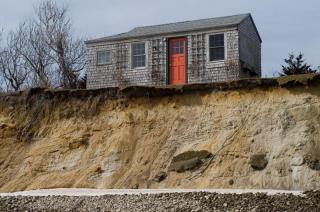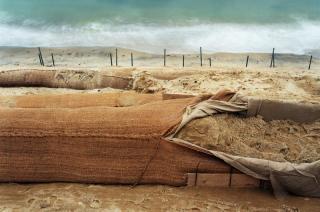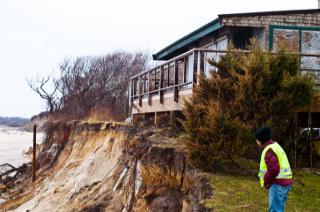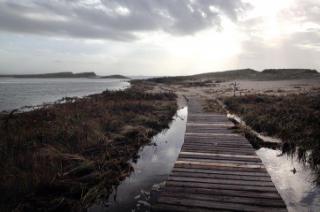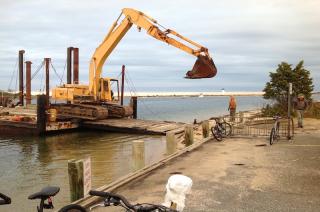Erosion
2013
The succession of storms that have pounded the Island this winter have taken their toll in Oak Bluffs, where the town says massive repairs are needed to stabilize the damaged East Chop area.
Officials said the already-weakened East Chop Drive, bluff and beach have sustained significant damage in the past few months, beginning with Hurricane Sandy in October and continuing through a nearly-three-day storm last week.
The Chilmark conservation commission voted this week that a house perched precariously at the edge of a cliff overlooking Stonewall Beach cannot be moved again, and instead must come down.
“We’re at the point where this house should be removed, not relocated,” commission chairman Pamela Goff said. “This [application] is just delaying the ultimate end.”
Chilmark town leaders agreed that the decision marks the first time in memory that a house will be demolished due to the threat of erosion.
While elaborate plans continue to unfold for moving a large Chappaquiddick house, the Edgartown conservation commission is grappling with a new issue: whether actions taken to stem the erosion can continue after the house is moved.
For months, the situation unfolding at Wasque Point where a rapidly eroding coastal bluff is swiftly approaching an 8,800-square-foot house, has captivated the Island.
2012
Following Hurricane Sandy’s blow to the south-facing coastline of the Vineyard last month, the Chilmark conservation commission is now facing a slew of plans for beach protection, including a request to move two homes and a shed now perilously perched atop the cliff at Stonewall Beach.
While the Island was spared the brunt of Hurricane Sandy, reports early Tuesday confirmed severe erosion, especially on south-facing shorelines. The ocean washed over Norton Point Beach at Katama in Edgartown, turning the eastern end of the beach into a sandbar covered with water at high tide, said Chris Kennedy, superintendent for The Trustees of Reservations.
With the failure of a previous plan to try to stem the erosion that threatens a Chappaquiddick house and a severe tropical storm headed up the East Coast early next week, the Edgartown conservation commission Wednesday approved a new emergency plan of action for the property.


